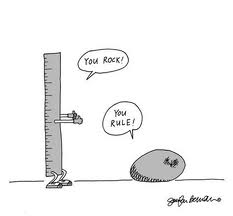4 Things Event Marketers can learn from Direct Mail Marketers
Nov 1, 2010
1. Use a baseline.
Direct Marketing works because practitioners are constantly improving upon a baseline program and comparing newer efforts against it. Event Marketers can do the same by 1) measuring the appropriate metrics, such as Consumers Engaged Onsite and the Cost Per Engagement; and 2) measuring follow-up activity, such as Online Visits, SMS texts, etc. Sometimes event marketers are too willing to do something different simply for the sake of novelty, or abandon a program when only an adjustment is needed. Direct Marketers never abandon a program that works well in favor of a new, untested program – they simply test the new program against the proven program or test enhancements to a proven program.
2. Start with a good list.
Of course, you don’t have a list in Event Marketing, but the premise is the same – be sure you’re reaching a targeted audience. Event demographics should be readily available and your events should be a good match for your product. Great Western Bank (long gone) once sponsored a series of rodeo events, and while the events made sense from a creative and branding perspective, it made absolutely no sense from a demographic fit; the audience was not upscale enough for a bank targeting adults 55+ with incomes $75k and over. Conversely, the rodeo is a powerful tool for tire manufacturers, tool manufacturers, truck manufacturers, and farming and lawn equipment manufacturers. (On a side note, here’s a nod to the power of rodeo sponsorship: my uncle works his farm wearing Levi jeans, but when he goes to the rodeo, he wears a pair of Wranglers without fail.)
3. Refine the list based on responses to your program.
Direct Marketers flag anyone replying to a previous mailing and put them in a subset that receives additional attention or a different, creative approach, because that group is predisposed to respond to the next piece of communication. Similarly, event attendees represent the most predisposed target audience you could wish for; they have an obvious affinity that can be leveraged, and they’re interacting with your brand face-to-face. So don’t treat this group like someone who serendipitously found your content on the web.
4. Don’t give up after one interaction.
Why do you keep getting catalogs even though you’ve never responded to date? Because Direct Marketers know that the message needs to reach prospects when they’re ready to receive the information, so by remaining in touch with consumers, brands are sure to intersect with them at a time when the consumer is finally ready. Moreover, the cost to deliver an incremental communication is far less than that to create an original lead. Yet too many event marketers deem programs a failure if attendees don’t immediately race down to the store to buy their product. And so they race back out to events to generate new leads. If it costs you $3 to generate a lead and $0.05 per incremental communication (email), your conversion rate on new leads has to be 60x higher than on existing leads to yield the same Cost Per Conversion. In other words, you can leverage your marketing dollars 60x by focusing on lead conversion from your existing base rather than using up those dollars to buy brand new names. Don’t push a rock up a hill only to let it roll back down when you’re nearly to the top.
Direct Marketers build their whole business model around this ability to leverage their existing lists… something antsy Event Marketers can learn from when they’re about to give up on a particular market because it hasn’t generated an immediate reaction or sales spike. A lead, even one generated a year ago, has a value. Therefore, find out what the brand does with the leads you generate, how long those leads remain in the system, and the conversion rate for leads based on the age of the lead.




